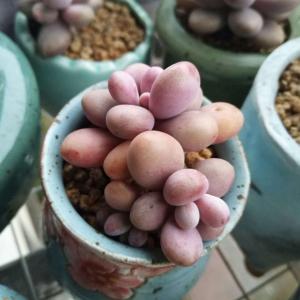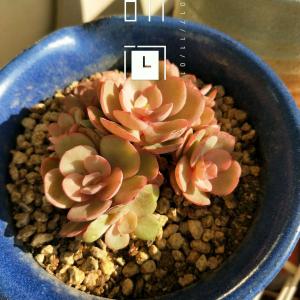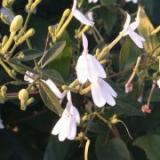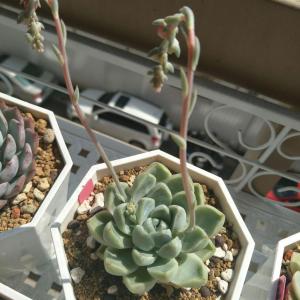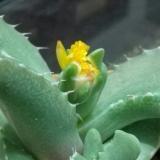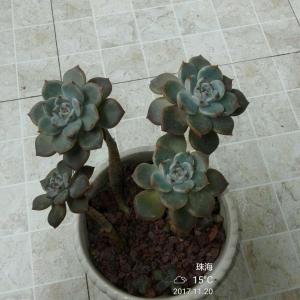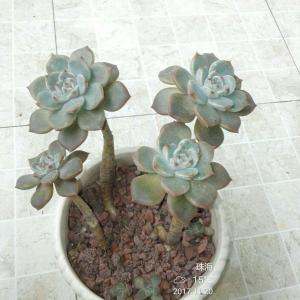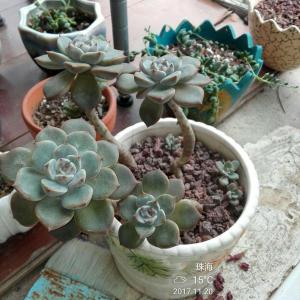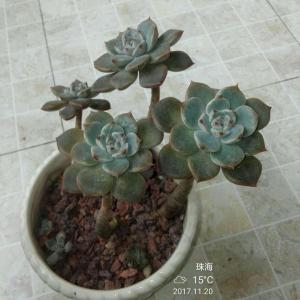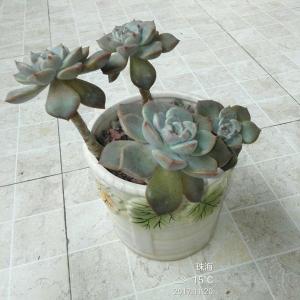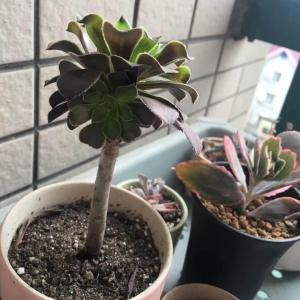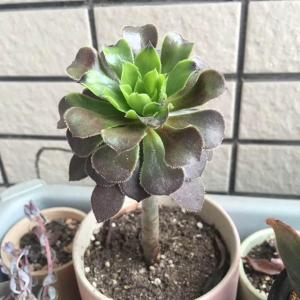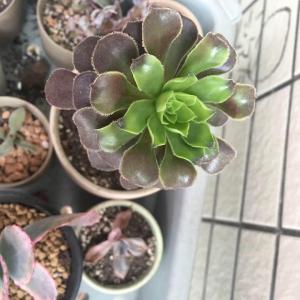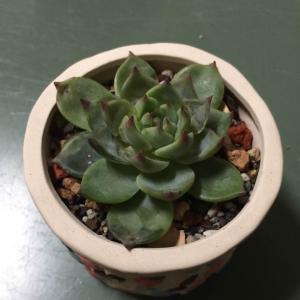文章
权问薇
2018年02月06日


一、能否开花
其本身的花期就比较长,只要做好养护工作,它的花期可以一直从5月持续到11月,在此期间花开不断。而只要做到了以下几点,让它在冬季的室内开花也是完全可以的。

二、环境及光照
这种植物喜欢通风透气、温暖潮湿的生长环境,喜欢阳光。所以要让茉莉在冬季开花的首要因素就是要做好温度的控制工作,大多数品种的茉莉不耐寒,温度一旦低于5℃,枝叶就特别容易受冻,持续时间一旦过长,就有被冻死的危险。要想让它在冬季开花,就必须保持12℃以上的室温。此外,它的生长需要充足的光照,所以要将其放在温暖朝阳的地方,使其得到充足的阳光。

三、水分
对于所有的植株来说,水分都是其生长过程之中极其重要的因素,水分的多寡直接影响到植株的生长。这种花是一种不耐旱而又怕湿涝的植物,浇水的时候,要注意水量的控制,使茉莉得到充足的水分,但是因其怕湿涝,一定要在浇水的时候注意盆底不可有积水,可以采取少量多次的浇水方法。
四、土壤
它的栽植需要的沙质土,其中又以肥沃的微酸性土质为佳。沙质或半沙质的土壤是良好的透气性的保障,而微酸性的肥沃土质可以使其得到充足的养分,从而生长旺盛,更容易开花。
五、施肥
想要茉莉在冬季的室内开出美丽的花朵,适时适量的施肥是必不可少的。施肥的种类应该以有机肥和磷钾肥为主,如多元素花肥、花生饼粉等都是不错的选择,施肥次数上建议控制在每个月两次。
4
1
文章
Miss Chen
2018年01月22日

Description: This perennial wildflower is 1-2½' tall and compactly branched. The stems are light green to reddish green, angular or terete, and canescent-hairy. Alternate compound leaves occur along the stems; individual leaves are palmate with 7-11 leaflets. Individual leaflets are 1-2½" long and oblanceolate in shape; their margins are smooth and ciliate. The upper surface of the leaflets is medium green and hairless, while the lower surface is pale green. Each compound leaf has a long ascending petiole about 1-4" long that is light green to reddish green. The stems, petioles, and leaf undersides are sparsely to moderately canescent-hairy. The upper stems terminate in narrow racemes of flowers about 4-10" long. The flowering stalks are light green to reddish purple. Individual flowers are about ¾" long, consisting of 5 blue-violet petals (rarely white or pink), a tubular calyx with large lobes, several stamens, and a pistil with a single style. The petals have a pea-like floral structure, consisting of a large upper banner and 2 wings that project forward to enclose the keel. The lateral edges of the banner fold backward from its center; as a flower ages, the center of the banner becomes more white. The calyx is light green to reddish purple. The slender pedicels of the flowers are up to ½" long. The flowering stalks, calyces, and pedicels are sparsely to moderately canescent-hairy. At the base of each flower, there is a linear-lanceolate floral bract that soon withers away.
The blooming period occurs from late spring to early summer and lasts about 1 month for a colony of plants. Afterwards, the flowers are replaced by elongated seedpods about 1¼-2" long and canescent-hairy. Each seedpod contains about 7 seeds, which can be ejected several feet away from the mother plant. The root system consists of a taproot with rhizomes. Reproduction is by seed and vegetative clones from the rhizomes.
Cultivation: The preference is full or partial sun, mesic to dry conditions, and an acidic soil containing sand or sandy loam. The root system can fix nitrogen into the soil. The seeds should be scarified to facilitate germination. Individual plants can be short-lived or long-lived, depending on environmental conditions.
Range & Habitat: Wild Lupine is an uncommon native wildflower that is found in NE Illinois and other northern areas of the state (see Distribution Map). Because of habitat destruction and fire suppression, populations of this wildflower have declined. Habitats include sand prairies, openings in sandy woodlands, sandy savannas, edges of sandy woodlands, stabilized sand dunes, and powerline clearances in sandy areas. Dominant canopy trees in some of these habitats are either oaks (especially Black Oak) or pines.

Faunal Associations: The flowers are cross-pollinated primarily by honeybees, bumblebees, digger bees (Synhalonia spp.), Mason bees (Osmia spp.), and other long-tongued bees. Other floral visitors include Halictid bees and bee flies. Only pollen is available as a floral reward, which is forcibly ejected into the faces of such insect visitors. Occasionally, the Karner Blue and other butterflies visit the flowers, searching in vain for nectar. Several insects feed on the foliage and other parts of Wild Lupine. These insect feeders include caterpillars of the butterflies Lycaeides melissa samuelis (Karner Blue) and Callophrys irus (Frosted Elfin), and caterpillars of the skippers Erynnis baptisiae (Wild Indigo Duskywing) and Erynnis persius (Persius Duskywing). The caterpillars of several moths also feed on Wild Lupine: Caenurgina crassiuscula (Clover Looper), Grammia phyllira (Phyllira Tiger Moth), Grammia placentia (Placentia Tiger Moth), Utetheisa bella (Bella Moth), and Walshia miscecolorella (Sweet Clover Root Borer). Other insects feeders include Empoasca fabae (Potato Leafhopper), Hadronema militaris (Military Plant Bug), and seed-eating larvae of the weevil Apion minor. The foliage is toxic to sheep and horses, however deer, rabbits, and woodchucks occasionally browse on Wild Lupine.

Photographic Location: A wooded sand dune at the Indiana Dunes State Park in NW Indiana.
Comments: This is the only lupine that is native to Illinois; species in this genus are more abundant in the western United States. Wild Lupine is readily distinguished from Baptisia spp. (Wild Indigos) and other similar species in the Bean family by the abundant leaflets of its palmate leaves (7-11 per leaf). Other similar species in Illinois have either trifoliate leaves (3 leaflets per compound leaf) or pinnate compound leaves. Both the flowers and foliage of Wild Lupine are quite attractive. Another common name of this species is Sundial Lupine, because the palmate leaves orient themselves in the direction of the sun.
The blooming period occurs from late spring to early summer and lasts about 1 month for a colony of plants. Afterwards, the flowers are replaced by elongated seedpods about 1¼-2" long and canescent-hairy. Each seedpod contains about 7 seeds, which can be ejected several feet away from the mother plant. The root system consists of a taproot with rhizomes. Reproduction is by seed and vegetative clones from the rhizomes.
Cultivation: The preference is full or partial sun, mesic to dry conditions, and an acidic soil containing sand or sandy loam. The root system can fix nitrogen into the soil. The seeds should be scarified to facilitate germination. Individual plants can be short-lived or long-lived, depending on environmental conditions.
Range & Habitat: Wild Lupine is an uncommon native wildflower that is found in NE Illinois and other northern areas of the state (see Distribution Map). Because of habitat destruction and fire suppression, populations of this wildflower have declined. Habitats include sand prairies, openings in sandy woodlands, sandy savannas, edges of sandy woodlands, stabilized sand dunes, and powerline clearances in sandy areas. Dominant canopy trees in some of these habitats are either oaks (especially Black Oak) or pines.

Faunal Associations: The flowers are cross-pollinated primarily by honeybees, bumblebees, digger bees (Synhalonia spp.), Mason bees (Osmia spp.), and other long-tongued bees. Other floral visitors include Halictid bees and bee flies. Only pollen is available as a floral reward, which is forcibly ejected into the faces of such insect visitors. Occasionally, the Karner Blue and other butterflies visit the flowers, searching in vain for nectar. Several insects feed on the foliage and other parts of Wild Lupine. These insect feeders include caterpillars of the butterflies Lycaeides melissa samuelis (Karner Blue) and Callophrys irus (Frosted Elfin), and caterpillars of the skippers Erynnis baptisiae (Wild Indigo Duskywing) and Erynnis persius (Persius Duskywing). The caterpillars of several moths also feed on Wild Lupine: Caenurgina crassiuscula (Clover Looper), Grammia phyllira (Phyllira Tiger Moth), Grammia placentia (Placentia Tiger Moth), Utetheisa bella (Bella Moth), and Walshia miscecolorella (Sweet Clover Root Borer). Other insects feeders include Empoasca fabae (Potato Leafhopper), Hadronema militaris (Military Plant Bug), and seed-eating larvae of the weevil Apion minor. The foliage is toxic to sheep and horses, however deer, rabbits, and woodchucks occasionally browse on Wild Lupine.

Photographic Location: A wooded sand dune at the Indiana Dunes State Park in NW Indiana.
Comments: This is the only lupine that is native to Illinois; species in this genus are more abundant in the western United States. Wild Lupine is readily distinguished from Baptisia spp. (Wild Indigos) and other similar species in the Bean family by the abundant leaflets of its palmate leaves (7-11 per leaf). Other similar species in Illinois have either trifoliate leaves (3 leaflets per compound leaf) or pinnate compound leaves. Both the flowers and foliage of Wild Lupine are quite attractive. Another common name of this species is Sundial Lupine, because the palmate leaves orient themselves in the direction of the sun.
0
0





